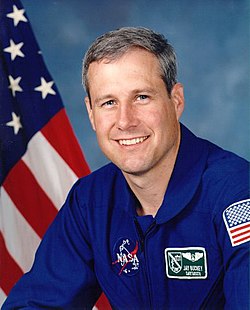Jay C. Buckey | |
|---|---|
 Buckey in 2007 | |
| Born | Jay Clark Buckey, Jr. June 6, 1956 |
| Occupation | Medical Doctor |
| Space career | |
| Dartmouth Payload Specialist | |
Time in space | 15d 21h 50m |
| Missions | STS-90 |
Mission insignia | |
Jay Clark Buckey, Jr. (born June 6, 1956, in New York City) is an American physician and astronaut who flew aboard one Space Shuttle mission (STS-90) as a Payload Specialist. [1] Buckey briefly ran for the Democratic nomination to challenge New Hampshire Senator John E. Sununu, a first term Republican, when he was up for re-election in 2008. Buckey withdrew from the race when former Governor Jeanne Shaheen entered the race. [2]
